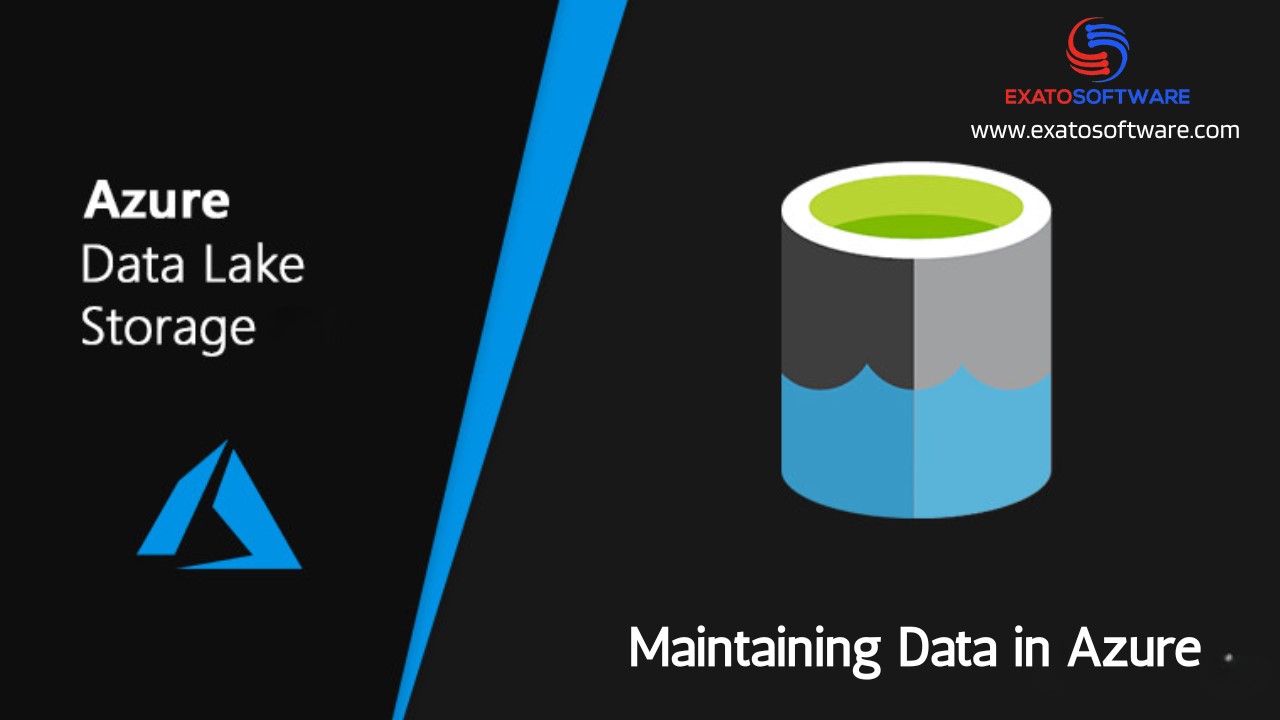Azure Data Lake Storage serves as a foundational component in Azure cloud development. It provides a scalable, secure, and cost-effective storage solution. It makes it easier to build modern data lake architectures and enables advanced data analytics, machine learning, and AI-driven insights.
Features of Azure Data Lake Storage (ADLS)
– ADLS is highly scalable and cost-effective storage that stores diverse data types text, images, videos, logs, and more in its native format.
– ADLS is designed to support the data lake architecture, where raw data is stored without any prior structuring or transformation.
– ADLS seamlessly integrates with various Azure big data and analytics services such as Azure Databricks, Azure Synapse Analytics, Azure HDInsight, and Azure Data Factory.
– ADLS offers unparalleled scalability and features like parallel access and hierarchical namespace to improve read and write performance, enabling faster data ingestion, querying, and analysis.
– ADLS provides robust security features. It supports Azure Active Directory (Azure AD) integration for authentication and access control. Role-based access control (RBAC), and Azure Key Vault integration for managing encryption keys. It also offers auditing and compliance features to help organizations meet regulatory requirements.
– ADLS allows the implementation of data governance policies and manages data lifecycle effectively. It supports features like data retention policies, versioning, and metadata management.
– ADLS is available in multiple Azure regions worldwide, with reduced latency and compliance with data residency requirements.
Use Cases for ADLS
Azure Data Lake Storage (ADLS) is a versatile storage solution that can be applied to various use cases for maintaining data on Azure.
Big Data Analytics: ADLS is ideal for storing large volumes of structured and unstructured data generated by big data analytics workloads. Organizations can use ADLS as a centralized repository to ingest, store, and analyze data from multiple sources, enabling advanced analytics, machine learning, and AI-driven insights.
Data Warehousing: ADLS can serve as a data lake storage layer for data warehousing solutions. Organizations can use ADLS to store raw data in its native format before transforming and loading it into a data warehouse for structured querying and reporting purposes.
IoT Data Storage: With the proliferation of Internet of Things (IoT) devices, organizations often need a scalable and cost-effective solution to store and analyze IoT-generated data. ADLS can be used to ingest and store streaming data from IoT devices, enabling real-time analytics, predictive maintenance, and anomaly detection.
Data Lakes for Data Science: ADLS provides a centralized data lake repository for data scientists to access and analyze diverse datasets for building machine learning models and conducting exploratory data analysis. Data stored in ADLS can be easily accessed and processed using tools like Azure Databricks or Jupyter Notebooks.
Log and Telemetry Data Storage: Organizations generate vast amounts of log and telemetry data from applications, servers, and networking devices. ADLS can be used to store log and telemetry data for monitoring, troubleshooting, and performance analysis purposes, enabling organizations to gain insights into system behavior and identify issues proactively.
Data Archiving and Backup: ADLS supports different storage tiers (hot, cool, archive) to optimize costs based on data access patterns and retention requirements. Organizations can use ADLS to archive historical data or backup critical data assets, ensuring data durability, compliance, and disaster recovery readiness.
Media and Content Storage: ADLS can be used to store multimedia content such as images, videos, and documents for media streaming, content delivery, and digital asset management applications. With its scalable and durable storage capabilities, ADLS can handle large media files and support high-throughput access patterns.
Genomic Data Storage and Analysis: In life sciences and healthcare industries, genomic data analysis requires storage solutions capable of handling large-scale genomic datasets. ADLS can be used to store genomic data for research, analysis, and collaboration, enabling genomic researchers and bioinformaticians to access and analyze genomic data efficiently.
These are just a few use cases for using Azure Data Lake Storage (ADLS) to maintain data on Azure. ADLS’s scalability, flexibility, and integration with other Azure services make it a versatile storage solution for a wide range of data management and analytics scenarios.
ADLS for maintaining Data
Let us take an example to understand how ADLS can be used for maintaining and analyzing its data on Azure.
Scenario: Retail Data Analytics with ADLS
1. Data Ingestion: The retail company collects data from various sources such as online transactions, in-store purchases, customer interactions, and inventory management systems. This data includes structured data (e.g., transaction records, customer profiles) and unstructured data (e.g., product images, customer reviews).
2. Data Storage: The company uses Azure Data Lake Storage (ADLS) as a centralized repository to store all its data in its raw format. It creates a data lake hierarchy within ADLS, organizing data into folders and directories based on data sources, departments, or categories. For example:
– /raw
– /transactions
– /customer_data
– /inventory
– /logs
3. Data Processing: The company leverages Azure Data Factory to maintain data pipelines for ingesting, transforming, and loading data into ADLS. Data from different sources is ingested into ADLS in its raw form without any preprocessing. Transformation activities such as data cleaning, normalization, and enrichment are performed as needed using Azure Databricks or Azure Synapse Analytics before loading the processed data back into ADLS.
4. Data Analysis: Data scientists and analysts within the company use tools like Azure Databricks, Azure Synapse Analytics, and Power BI to analyze data stored in ADLS. They can access the raw data in ADLS and apply various analytics techniques to gain insights into customer behavior, sales trends, inventory optimization, and marketing effectiveness.
For example:
– Using Azure Databricks, they analyze customer transaction data to identify patterns and trends in purchasing behavior.
– With Azure Synapse Analytics, they perform ad-hoc SQL queries to aggregate sales data and generate reports for management.
– Power BI dashboards are created to visualize key performance indicators (KPIs) and monitor business metrics in real-time.
5. Data Governance and Security: The company implements data governance policies and security measures to ensure the integrity, confidentiality, and compliance of data stored in ADLS. Azure AD integration is used for authentication and access control, role-based access control (RBAC) is applied to restrict access to sensitive data, and Azure Key Vault is used for managing encryption keys.
6. Scalability and Cost-Effectiveness: As the retail company’s data volume grows over time, ADLS provides scalable storage capacity to accommodate increasing data storage needs. The company optimizes costs by leveraging ADLS’s storage tiers (hot, cool, archive) based on data access patterns, with frequently accessed data stored in hot tiers and less frequently accessed data moved to cooler or archival tiers to reduce storage costs.
7. Data Backup and Disaster Recovery: The company utilizes Azure Backup and Azure Site Recovery services to implement data backup and disaster recovery strategies for data stored in ADLS. Regular backups are performed to protect against data loss events, and disaster recovery plans are put in place to ensure business continuity in case of unforeseen incidents.
As given in this example the Retail Company can effectively maintain, analyze, and derive insights from its data assets by leveraging Azure Data Lake Storage (ADLS). The retail company drives informed decision-making, improves operational efficiency, and enhances customer satisfaction.



